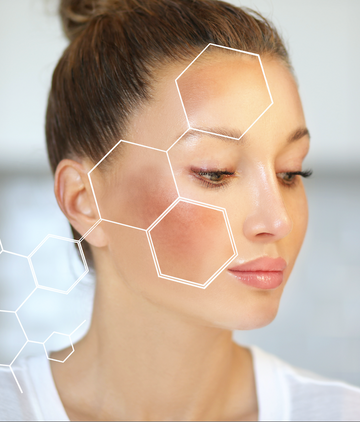
Hyperpigmentation is a common condition, which can occur in all skin tones. Herein, I share with readers my top tips for battling hyperpigmentation.
Diagnosis
- Understand that hyperpigmentation is not a diagnosis by itself. If given this diagnosis you must ask one important question- what is the cause of the hyperpigmentation? The underlying cause is important to understand prognosis and to determine the most appropriate management strategy. Examples of common causes of hyperpigmentation include melasma, inflammatory insults to the skin secondary to conditions such as acne, eczema, psoriasis, insect bites, medications, and general medical conditions e.g. Addison's disease. Sun exposure can also cause and/or worsen hyperpigmentation.
- To help determine the underlying cause of hyperpigmentation, a clinical assessment is required, which includes a full medical history and examination. The medical history pertains to finding out about the onset and evolution of the hyperpigmentation and other pertinent questions which will help unravel the cause of the hyperpigmentation. A clinical examination is also required, including the use of specialist tools such as a Dermatoscope. This clinical assessment is best undertaken by a physician, specifically a Dermatologist, especially one with a specialist interest in skin pigmentation disorders.
- In some cases, a sample of skin may be taken from lesional skin. This is a procedure called a skin biopsy, which is undertaken using local anaesthetic. The sample of skin can then be processed by a pathology laboratory and then examined under a microscope by a qualified Histopathologist. Undertaking a skin biopsy may also help to determine the underlying cause for the hyperpigmentation.
- Sometimes what appears to be hyperpigmentation may be normal constitutive skin colour, which appears abnormal because the adjacent /surrounding skin has either lost or has a reduced amount of pigment. In this setting the problem is depigmentation or hypopigmentation, rather than hyperpigmentation. Looking at old pictures and determining what your normal skin colour is, should be of help in this setting.
Sun protection
- Whatever the cause of hyperpigmentation, sun protection is important to prevent exacerbation of the problem. Given that long UVA and high energy visible light drive pigmentation it is important that sunscreens targeting these wavelengths are used in the setting of hyperpigmentation. Broadly speaking, this means the use of physical sunscreens (i.e. sunscreens containing zinc oxide and/or titanium dioxide)-these can leave a white film on the skin, which is cosmetically unacceptable for most people. Manufacturers of sunscreens avoid this “white film" issue by using tiny particles of zinc oxide and titanium dioxide-nanoparticles. The use of nanoparticles in sunscreens have caused controversy, although currently in the European Union such nanoparticles are approved to be used in sunscreens-the only exception is when used in a spray formulation given concerns about possible toxicity to lungs from inhalation. Chemical sunscreens may also be used as they may be more cosmetically acceptable. It is important to ensure that chemical filters used target UVA. To help protect against high energy visible light, tinted sunscreens (containing iron oxide) are ideal. Furthermore, sunscreens with antioxidants also protect against the effects of high energy visible light. Overall, remember that the use of sunscreens is only one aspect of general sun protective behaviour.
Tags:




